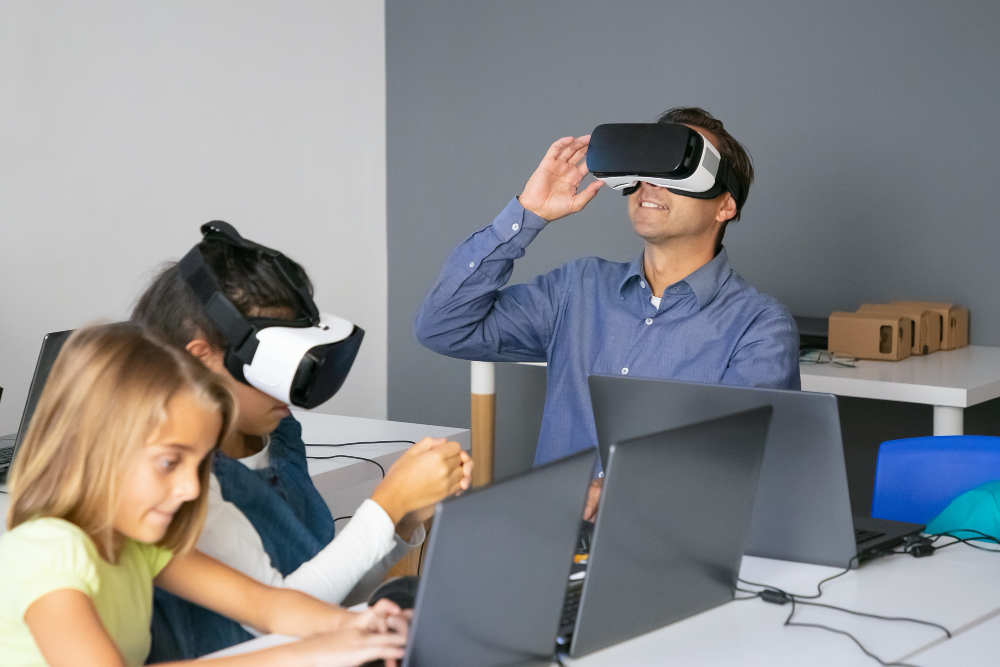Computer vision is one of the most transformative applications of artificial intelligence (AI), enabling machines to interpret and act on visual data. From automating tasks to enhancing customer experiences, computer vision development is rapidly advancing, reshaping industries, and creating opportunities for innovation. This article explores the concept, development, and real-world impact of computer vision in businesses and how organizations can leverage its potential for growth.
Understanding Computer Vision Development
Computer vision development focuses on creating systems and algorithms that enable machines to process, analyze, and make decisions based on visual inputs like images and videos. This requires a combination of AI, machine learning, and deep learning techniques.
Key Steps in Computer Vision Development
- Data Collection and Annotation:
- Gathering large datasets of images or videos.
- Labeling data for training models (e.g., identifying objects, and patterns).
- Model Training:
- Training AI models using neural networks to recognize and interpret visual patterns.
- Fine-tuning models for specific applications like object detection or image segmentation.
- Integration with Systems:
- Embedding computer vision models into hardware or software systems for real-time use.
- Continuous Improvement:
- Updating models with new data to improve accuracy and performance.
Technologies Driving Computer Vision Development
- Convolutional Neural Networks (CNNs): Specialized neural networks designed for image recognition tasks.
- Edge Computing: Enables processing data locally on devices for faster and more secure outcomes.
- Cloud Services: Provide scalable platforms for training and deploying computer vision models.
Applications of Computer Vision in Businesses
The adoption of computer vision in businesses is transforming operations, enhancing customer experiences, and driving efficiency across industries. Here are some of its most impactful applications:
1. Retail and E-commerce
Computer vision enhances the retail experience by enabling features like visual search, automated checkout, and personalized recommendations.
- Example: Visual search tools allow customers to upload images and find similar products instantly.
- Impact: Improved customer satisfaction and increased sales through better product discovery.
2. Healthcare
In healthcare, computer vision assists in diagnostics, monitoring, and treatment planning.
- Example: AI-powered systems analyze medical images (e.g., X-rays, MRIs) to detect abnormalities.
- Impact: Faster diagnoses and improved accuracy in identifying diseases.
3. Manufacturing
Manufacturers use computer vision for quality control, predictive maintenance, and automation.
- Example: Cameras integrated with AI detect defects on production lines in real time.
- Impact: Reduced waste and enhanced product quality.
4. Agriculture
Computer vision supports precision farming by analyzing crop health, detecting pests, and monitoring soil conditions.
- Example: Drones equipped with AI cameras provide insights into field conditions.
- Impact: Higher crop yields and sustainable farming practices.
5. Finance and Banking
In the financial sector, computer vision improves security and customer verification processes.
- Example: Facial recognition technology ensures secure transactions and ATM access.
- Impact: Enhanced security and streamlined operations.
6. Logistics and Transportation
Computer vision optimizes logistics through automated sorting, real-time tracking, and autonomous vehicles.
- Example: AI systems monitor driver behavior and improve fleet management.
- Impact: Reduced operational costs and improved safety.
Key Benefits of Computer Vision in Businesses
The integration of computer vision in businesses offers several advantages:
- Enhanced Automation:
- Reduces manual intervention, saving time and labor costs.
- Improved Accuracy:
- AI-powered systems minimize human error in tasks like quality control and diagnostics.
- Cost Efficiency:
- Optimized operations reduce waste and maximize resource utilization.
- Better Decision-Making:
- Real-time insights from visual data enable informed business strategies.
- Customer Satisfaction:
- Personalized services and improved experiences enhance customer loyalty.
Challenges in Computer Vision Development
While promising, computer vision development comes with challenges:
- Data Privacy and Security:
- Collecting and using visual data raises concerns about compliance with privacy regulations.
- High Costs:
- Developing and deploying computer vision systems require significant investment in technology and expertise.
- Accuracy in Diverse Environments:
- AI models may struggle to adapt to variations in lighting, angles, or backgrounds.
- Skill Gaps:
- A shortage of professionals with expertise in computer vision development hinders adoption.
Trends Shaping Computer Vision Development
The field of computer vision development is constantly evolving, driven by advancements in AI and related technologies. Key trends include:
- Integration with Augmented Reality (AR):
- Combining computer vision with AR for immersive applications in gaming, retail, and training.
- Edge AI:
- Performing computer vision tasks locally on devices for faster processing and privacy protection.
- Generative AI Models:
- Using AI to create realistic synthetic images for training computer vision systems.
- Explainable AI (XAI):
- Enhancing transparency in computer vision algorithms to build trust and understanding.
Future Prospects of Computer Vision in Businesses
The future of computer vision in businesses is poised for exponential growth. Here’s what to expect:
- Expansion Across Industries:
- Adoption of computer vision in emerging sectors like energy, education, and legal services.
- AI-Powered Smart Cities:
- Computer vision systems monitoring traffic, public safety, and infrastructure in urban environments.
- Personalized Customer Experiences:
- Greater use of facial recognition and visual data analytics to tailor services.
- Advancements in Autonomous Systems:
- Increased reliance on computer vision for self-driving cars, drones, and robots.
- Sustainability Applications:
- Leveraging computer vision for waste management, pollution control, and renewable energy projects.
How Businesses Can Embrace Computer Vision
For businesses aiming to adopt computer vision, here are actionable steps:
- Identify Use Cases:
- Pinpoint areas where computer vision can add value, such as customer service or operational efficiency.
- Invest in Training:
- Upskill employees to manage and implement computer vision technologies.
- Collaborate with Experts:
- Partner with experienced computer vision development companies for seamless implementation.
- Focus on Compliance:
- Ensure adherence to data privacy and security regulations.
- Measure ROI:
- Monitor the performance and outcomes of computer vision projects to refine strategies.
Conclusion
Computer vision development is revolutionizing how businesses operate, enabling them to harness the power of visual data for improved efficiency and customer satisfaction. From retail to healthcare, the applications of computer vision in businesses are vast and impactful.
As technology evolves, businesses must adapt to remain competitive, leveraging computer vision to drive innovation and achieve sustainable growth. The future belongs to those who embrace this transformative technology and unlock its full potential.




